




A Guide for Institutional Investors

For institutional investors, impact investing offers a powerful way to align financial goals with their broader mission or organizational values

Impact investments generate measurable social and environmental impact alongside financial returns. They are designed to finance solutions that benefit people and the planet — like affordable housing, quality jobs, community services, and clean energy.
For institutional investors, impact investing offers a powerful way to align financial goals with their broader mission or organizational values. It turns investment capital into a force for good, driving positive change across industries, markets, and communities, while delivering financial returns and long-term value for stakeholders.
Impact investing spans a wide range of asset classes and risk/return profiles, but it is defined by two essential features:
1. Intentionality: The deliberate effort to create social and/or environmental impact alongside financial returns.
2. Impact Measurement and Management: Collecting and reporting on the social and environmental outcomes of investments.
Africa Go Green (AGG) invests in businesses that develop energy efficiency and renewable energy projects in Sub-Saharan Africa.
ROC USA® helps residents buy their manufactured home communities from private community owners, preserving and improving affordable housing for low- and moderate-income families.


As sustainable investing that considers environmental, social, and governance (ESG) factors becomes increasingly mainstream, there is also a growing momentum behind impact investing that is explicitly designed to create measurable impact. In its 2024 Sizing the Impact Investing Market report, the Global Impact Investing Network (GIIN) estimated that roughly 4,000 organizations manage US$1.571 trillion in impact investing assets worldwide, representing 21% compound annual growth of the total impact investing market since 20191
In the 2024 US SIF Trends Report, 58% of respondents cited the expansion of impact investing as a top trend2, and in Calvert Impact’s 2024 Investor Survey3, more than 56% of investors planned to increase their impact investments over the next year.
$1.57 TRILLION 21%
consider impact investing a top trend plan to increase impact investments
1 https://thegiin.org/publication/research/sizing-the-impact-investing-market-2024/
2 https://www.ussif.org/research/trends-reports/us-sustainable-investing-trends-2024-2025-executive-summary
3 https://calvertimpact.org/resources/investor-survey-results
• Address Critical Global Challenges: With their vast resources and ability to influence markets, institutional investors are uniquely positioned to drive large-scale impact by directing their capital towards opportunities that can foster a greater sense of purpose, as well as contribute to long-term value creation and sustainable growth.
o Fund mission-aligned impact sectors
o Contribute to the Sustainable Development Goals (SDGs)



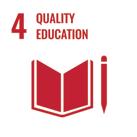
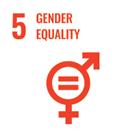


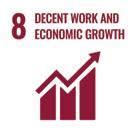

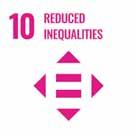

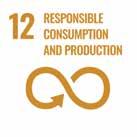




The UN’s 2024 Financing for Sustainable Development Report details how much more investment is needed to meet global goals.
By aligning their investment portfolios with their mission via impact investing, foundations have an opportunity to leverage significantly greater assets beyond their grant portfolio, all while growing their overall endowments and ensuring long-term sustainability.
• Improve Diversification and Risk Management: Impact investing provides access to new asset classes, sectors and geographies, enabling institutional investors to diversify their portfolios and balance traditional investments with impact-driven assets that may be less correlated with market volatility.
• Generate Attractive Financial Returns: By focusing on emerging markets, sustainable industries, and innovative solutions, institutional investors can tap into high-growth sectors that deliver substantial financial gains. Nearly 74% of impact investors surveyed target risk-adjusted, market-rate returns, and around 86% of respondents report that their financial returns are outperforming or performing in line with expectations.4
4 https://thegiin.org/publication/research/state-of-the-market-2024-trends-performance-and-allocations/
• Enhance Reputation and Meet Stakeholder Expectations: Increasingly, stakeholders such as clients, beneficiaries, regulators, and the public expect institutions to have a positive impact in their communities. Impact investing helps institutions meet these expectations, bolstering their reputation and fostering stronger relationships with key stakeholders. Nearly 90% of institutional investors report that client and external stakeholder demands are a driving force behind their sustainable investing activities.5
Place-based impact investments can help corporations drive tangible change in the communities where they operate, enhancing relationships with local stakeholders and building brand loyalty with socially-conscious customers.
• Access Government Funding/Incentives and Ensure Regulatory Compliance: As governments and regulators around the world place greater emphasis on sustainability, impact investing enables institutional investors to stay ahead of evolving regulations. In many cases, investing in high impact opportunities offers access to special incentives, tax benefits, or government-backed funds, facilitating further capital growth and fostering long-term stability.
• Attract New Clientele and Boost Market Differentiation: Impact investing resonates with a growing wave of investors, particularly younger generations who prioritize ethical practices and sustainability in their financial decisions. By embracing impact investing strategies, institutional asset managers can position themselves as leaders in the future of finance, thus fostering long-term growth and strengthening their competitive edge. For 79% of asset managers, sustainable investing offerings are seen as a key differentiator for winning or retaining new clients.6
By adopting impact investing strategies, fund managers and family offices can engage the emerging class of values-driven Millennial investors, with an estimated $90 trillion in inheritance.7
• Explore New Markets and Strengthen the Value Chain: As impact investing often targets newer markets, institutions can gain valuable insights into the needs of these communities, revealing opportunities to adapt or expand their business. This approach serves as a strategic tool for market exploration, supports social entrepreneurship, and strengthens value chains by integrating new businesses that directly contribute to operations, amplifying overall impact.
impact investors target risk-adjusted, market-rate returns
74% report financial returns meet expectations or are outperforming 86%
report client and stakeholder demands drive sustainable investments 90% report sustainable offerings are key in winning new clients 79% $90T
inheritance coming to values-driven Millennial investors
5 https://www.morganstanley.com/content/dam/msdotcom/en/assets/pdfs/CRC_3923864-2024_Sustainable_Signals_Institutional_ Investors-PDF_Report-FINAL.pdf
6 https://www.morganstanley.com/ideas/sustainable-investing-asset-managers
7 https://fortune.com/2024/02/29/america-wealthest-one-percent-minimum-millennials-richest-generation/
• Banks
• Corporations
• Development finance institutions
• Donor-advised funds
• Family offices
• Insurance companies
• Mutual funds
• Non-governmental organizations
• Private foundations
• Pension funds
• Religious organizations
The Global Impact Investing Network's 2024 Sizing the Impact Investing Market report observes that larger investors represented an outsized share of global impact investing assets under management (AUM). Notably, pension funds and insurers, which comprised just 18% of the organizations surveyed, collectively held 48% of impact AUM.8
Pension funds and insurance companies with large, diversified portfolios can use impact investments in sectors like sustainable infrastructure or renewable energy to complement their traditional asset allocations and mitigate long-term risk.
AFFORDABLE HOUSING
COMMUNITY DEVELOPMENT
Affordable Homes of South Texas (AHSTI) provides home ownership opportunities and financial education to low-income residents of South Texas.

8 https://thegiin.org/publication/research/sizing-the-impact-investing-market-2024/
Many investors feel the need to become experts in impact investing before making any moves. While it's important to be informed, overanalyzing can lead to inaction. You don’t need to map the entire landscape before making your first investment.
Some investors hold out for the “perfect” investment —one that checks every box financially and impact-wise. Starting with aligned, accessible opportunities within your risk appetite is often more practical.
Taking that initial step is often the biggest hurdle. Start small. Invest in something aligned with your values and financially comfortable within your risk tolerance. Learn from the experience and build over time. This guide outlines a variety of possible steps towards building a strategy, but investors don’t have to do it all at once. Your financial consultants can help you get started – what matters most is that you take that first step!

1. ESTABLISH an Impact Strategy that Furthers Your Mission
2. APPLY Your Impact Strategy to Your Portfolio
3. INCORPORATE Your Impact Strategy into Policies & Processes
4. SOURCE and Make Impact Investments
5. MEASURE and Manage Your Impact
• An insurance company that focuses some of its portfolio on the social determinants of health—like access to quality housing, clean water and sanitation, and food security programs—in the communities it serves.
• A pension system that considers the importance of the services provided by the public companies it invests in, votes its proxies and files or supports shareholder resolutions, and invests in impact through community development and renewable energy opportunities.
• A foundation that strategically leverages Program-Related Investments (PRIs) to fulfill 5% minimum payout requirements, while also deploying Mission-Related Investments (MRIs) from its endowment to drive local, place-based impact in sectors like small business and sustainable agriculture.
• CFA Society United Kingdom’s Certificate in Impact Investing
• California Public Employees Retirement System (CalPERS) Sustainable Investments 2030 Strategy
• The Church Commissioners for England detail their Impact Framework in Real World Impact
• MacArthur Foundation’s Impact Investment Strategy
Before making impact investments, detail an “impact strategy” to anchor your investment approach in your mission and priorities.
• Define Your Vision: What is your vision for a better world, and what specific impacts do you want to achieve? Consider key sectors or themes (e.g., affordable housing, climate action, racial and gender equity). Decide on your geographic focus – are you targeting local, national, regional, or global impact?
• Ensure Alignment with Values: How do your impact goals align with your institution’s values, position statements, or frameworks like the UN Sustainable Development Goals (SDGs)?
• Consider Stakeholder Expectations: Take into account the expectations of your stakeholders, such as beneficiaries, customers, funders, and partners, ensuring that the impact strategy resonates with their values and concerns.
• Balance Business Objectives: Ensure that your impact strategy also aligns with your institution’s financial objectives and long-term sustainability, balancing social returns with your risk appetite.
• Learn As You Go: An important part of any investment strategy is to be open to learning and adjusting. That’s certainly true of impact investing—beyond financial returns, your organizational priorities may evolve, or new opportunities for greater impact may emerge, allowing you to adapt your strategy over time.
Partner Community Capital helps communities flourish by lending to enterprises that promote a healthy environment and healthy families.

Once your Impact Strategy has been crafted, institutional investors can decide how they want to apply that new strategy to their portfolio.
• CAPITAL CONSIDERATIONS
o Type of Capital: Whether debt or equity, private or public markets, catalytic or traditional capital—understanding the type of capital you have helps identify the most appropriate impact investment opportunities.
o Investor Type: Larger institutions that qualify as accredited or qualified investors have access to a broader range of private market investments, while smaller institutions may be limited to publicly available options. Non-US institutions should check local regulations for access.
o Custody: The custodian of your capital affects the operational, regulatory and legal frameworks for your investments. Institutions using large financial firms may face limitations on available impact opportunities, making it important to discuss options with your advisor or custodian, including the possibility of moving assets for more diverse investment choices.
• PORTFOLIO OBJECTIVES AND OPERATIONS
o Financial Risk and Return Objectives: Outline expected returns and risk tolerance, which may vary based on impact commitment, asset class constraints, and the comfort level and experience of committees, finance staff, and consultants.
o Liquidity and Time Horizon: Your institution’s liquidity needs and investment time frame will guide the types of impact investments you can pursue.
o Operational Capacity: Publicly available impact products are easy to access and offer clear offering documents and reporting, while private market opportunities often require more dedicated resources for sourcing, monitoring, and servicing.
• LEVEL OF PORTFOLIO COMMITMENT
o Phased Commitment or Pilot Approach: Consider starting with a pilot commitment or phased approach to assess the effectiveness of the impact strategy before scaling up.
o Carve-out: A common strategy is to allocate a specific dollar amount or percentage (e.g., $1 million or 5% of the total portfolio) toward impact investing.
o Asset Class Approach: Some investors target specific asset classes, such as moving cash or fixed income investments to impact, rather than applying across a whole portfolio, at least to start.
o Full Portfolio Integration: More investors are choosing to integrate impact across all asset classes and sectors, to fully align their investments with their mission. Examples include gender lens investing or child lens investing.
According to the US SIF Sustainable Investing Trends 2024/2025 Report, the majority of respondents used multiple sustainable investment strategies: 72% integrate sustainability or ESG characteristics, 67% use negative/exclusionary screening, and 57% use impact investing, among others.9
9 https://downloads.ctfassets.net/pptrn6r2r6bl/1VouiNcLMzmjv7C0Lf0I4v/bb4b27d5ca4a59a85094bdf3a599f935/ US_SIF_Trend_Report_2024_2025_Final_090125.pdf (pg41)
o Asset Classes: Impact strategies can span across both public and private markets. While considering Environmental, Social, and Governance (ESG) factors when evaluating investments has become more common, impact investments are explicitly designed to create measurable social and environmental impact and may involve a range of asset classes.
Products Mutual funds, ETFs, stocks, bonds
Impact Tools
Impact Intent
Impact Reporting
Screening companies for inclusion/exclusion, proxy voting, shareholder engagement
Reduce harm and risk, improve corporate practices
Examples of changed corporate practices (e.g., board representation, disclosure on political spending, understanding climate risk)
Cash, fixed income/debt, venture capital, real assets, direct investments
Investing in vehicles that reach communities and markets not served by traditional finance
Create solutions to social and environmental challenges
Measurable outputs (e.g., affordable housing units built, emissions reduced, jobs created), outcomes, and stories of lives changed for every investment
Institutional investors must balance financial goals and risk tolerance with the capital needs of fund managers, companies, and the communities they serve. Assessing the maturity of impact sectors and geographies early on is essential for setting realistic expectations and ensuring that portfolio policies are actionable. In searching for investable opportunities, consider:
o Complementary Sectors: Explore mature sectors that may offer more investment opportunities that align with your impact goals and support your target population, for example, community development initiatives that indirectly benefit refugees.
o Blended Finance: Leverage blended finance models, which combine commercial capital from private institutions with concessionary capital (i.e., grants and sub-commercial funding) from philanthropic or development finance investors to fill market gaps and drive impact. Blended finance helps reduce risk, lower costs, and mobilize new, diverse capital streams into emerging sectors. In underserved or nascent markets, it can accelerate market maturity by demonstrating the financial viability and scalability of impact investments.
o Catalytic Investments: Catalytic capital includes investments that accept disproportionate risk and/or concessionary returns relative to a conventional investment. Making catalytic investments in early-stage ventures or sectors where capital is scarce has the potential to generate significant impact. These investments can help unlock innovation and bring new solutions to market, often at a higher risk but with potentially transformative results.
o Credit Enhancements: Institutional investors can play a critical role in de-risking investments in higher-risk sectors by providing credit enhancements such as guarantees or first-loss capital.

ENVIRONMENTAL SUSTAINABILITY
SUSTAINABLE AGRICULTURE
The Republic of Seychelles launched the world’s first sovereign blue bond to support the expansion of marine protected areas and the development of the Seychelles’ blue economy.
Once your Impact Strategy has been integrated into your portfolio, it's time to formalize it in your institution's policies and procedures. Key steps may include:
• Mission and Strategy Integration: Clearly state your institution’s mission and Impact Strategy in policy documents.
• Governance and Oversight: Establish decisionmaking processes and assign responsibility for overseeing strategy execution, such as creating committees or advisory boards.
• Compliance: Ensure the impact investment strategy complies with applicable regulations, industry standards, and legal requirements, including securities and tax laws.
• Investment Manager Selection: Ensure that impact considerations are part of the criteria for choosing asset managers.
• Asset Class Guidance: Embed the impact strategy within the asset allocation framework, especially in prioritized impact areas.
• Impact Reporting: If you plan to report on impact to any stakeholders, establish clear reporting expectations internally and with investees to make it easier at reporting time.
• Define Impact Tools: Specify how impact investing tools will be used, such as:
o Impact Priorities: Outline the social and environmental outputs and outcomes you aim to achieve.
o Impact Metrics: Define what you want from investees and managers. Use standardized terms and align metrics with industry benchmarks (such as the GIIN’s IRIS+ impact metrics system) to ensure consistency and comparability.
o Screening: Beyond impact priorities to seek out, determine any exclusionary criteria.
o Investee Engagement: Define priorities for engaging the asset managers and companies you invest in.
o Stakeholder Engagement: Decide how to involve relevant stakeholders, such as endbeneficiaries or community members, to ensure the strategy reflects their needs.
• Wespath, the United Methodist Church’s Pension and Health Benefit Board, provides its Investment Philosophy, Investment Exclusion Guidelines, and Investment Policy
• Mission Investors Exchange foundation members offer their investment policies and guidelines.
• Principles for Responsible Investment’s Investment Policy guide for asset owners.
Additionally, you can integrate your Impact Strategy into your sourcing and screening questions, using a tool such as a Due Diligence Questionnaire (DDQ). See an example below:
Screening & Fit
Positive impact in impact sectors and alignment with theory of change
Sourcing Screens
Commitment to UN Sustainable Development Goals (SDGs)
What is the investment and/or asset manager’s theory of change, and does it align with yours? How will the environmental impact be demonstrated, measured, and reported?
Does the investment and/or asset manager have a commitment to the SDGs you care most about? For instance, SDG 7 – Affordable and Clean Energy and SDG 13 – Climate Action.
Governance and staff diversity, equity and inclusion
Underwriting
Key Areas for Analysis
Impact incorporation within mission, strategy, and operations
Investment process of funds/asset managers (origination, underwriting, monitoring of financial and impact outcomes), or supply chain of direct companies (design, production, sales, and marketing).
How do the products/services create impact? Refer to the 5 dimensions of impact, particularly “What”, “Who,” and “How Much.”
Monitoring & Reporting
Management and reporting of progress towards impact goals
Metrics
Impact metrics at the fund/asset manager and governance levels
Impact metrics at the end beneficiary and product/ services level
What are the investment and/or asset manager’s policies and practices and how do they represent communities they serve? What is the diversity breakdown of staff and clients? How is that reflected in their governance and leadership?
How are environmental sustainability goals incorporated within the investment and/or asset managers, mission, strategy, and operations? This may include how goals are codified within fund documentation, such as a Private Placement Memorandum (PPM) or prospectus.
How does the fund incorporate environmental sustainability into the investment process or supply chain? Do they screen downstream investees’ for environmental sustainability practices and/or help them set environmental impact targets?
What are the investment and/or asset manager’s policies and practices on representing the communities they serve? How is that reflected in their governance and leadership?
Will the fund manage and report progress towards environmental impact goals, in alignment with their theory of change and the 5 dimensions of impact? What is the frequency of impact reporting?
Will the fund report impact metrics at the fund/ asset manager and governance levels?
Will the fund report impact metrics at the end beneficiary level, disaggregated by target beneficiary type? Will the fund report impact metrics on products/services financed, distributed, etc.?
Equipped with your Impact Strategy, Investment Policy, and Due Diligence Questionnaire, your institution can now formally source, screen, and analyze impact investments. Some accessible resources to help you begin exploring impact investment opportunities:
• ImpactAssets 50: sortable database of leading impact investment fund managers that meet certain investability and track record standards.
• Impact Principles Signatories: list of asset managers committed to integrating impact throughout the investment lifecycle.
• Opportunity Finance Network: a US-based Community Development Financial Institution (CDFI) Locator sortable by geographic area served and financing types.
• ImpactAlpha’s The Liist: a curated database of Impact investing funds actively raising capital.
Leading trade associations like the Global Impact Investing Network, Mission Investors Exchange and US SIF also have databases of member investment funds, as well as links to other resources.

Managed by Deetken Impact Sustainable Energy, the Honduras Renewable Energy Financing Facility (H-REFF) provides funding for renewable energy projects in Central America and the Caribbean.
Greenline Ventures’ second Small Business Capital Fund provides loans to small businesses in the US that create quality jobs and wealth-building opportunities for low-income populations in under-invested communities.

A critical component of your Impact Strategy is developing a plan to track progress toward your goals—this is known as Impact Measurement and Management (IMM). IMM is an ongoing process that involves collecting data on the social or environmental outcomes of your investments, evaluating whether those outcomes align with expectations, and managing efforts to maximize positive impact while minimizing negative effects. Effective impact measurement ensures that your investments are creating the desired social or environmental change, aligning with your strategy and values, and providing the transparency needed for stakeholder reporting and future decision-making.
Choose
prioritize collaboration and transparency. When evaluating impact managers, prioritize those who openly share outcomes and impact data. This builds trust, supports informed decision-making, and fosters a more efficient market. Managers who actively collaborate with peers, investors, and stakeholders help scale the market, drive innovation, and counter greenwashing by ensuring impact claims are credible, measurable, and aligned with recognized standards. By backing managers who embrace transparency and collaboration, investors strengthen the overall impacting investing ecosystem.
Impact Strategy
Establish Goals Manage & Increase Impact Inform & Improve Strategy
Performance Against Goals (Impact)
IMM can be a simple exercise of establishing metrics in alignment with your Impact Strategy or can become a highly technical practice following industry frameworks. Best practices for IMM can be found in the GIIN’s Benchmarks and IRIS+, the Impact Frontiers impact management norms, and Impact Principles Courses such as Duke University’s IMM for the SDGs (virtual) and the University of Oxford’s Impact Measurement Programme (in person) may also provide a useful, step-by-step introduction.
By regularly assessing your impact, you can refine your strategy, allocate resources more efficiently, and ensure alignment with your long-term social, environmental, and financial goals. Your Impact Strategy and its application to your portfolio should evolve over time as you gain experience and capacity in impact investing. As with any investment approach, it's important to remember there is no one-size-fits-all solution—your strategy should be flexible and adaptable.
In summary, the steps to incorporating impact investing into your portfolio are:
1. ESTABLISH An Impact Strategy that Furthers Your Mission and Goals
2. APPLY Your Impact Strategy to Your Portfolio
3. INCORPORATE Your Impact Strategy into Policies and Documents
4. SOURCE and Make Impact Investments
5. MEASURE and Manage Your Impact
Your Impact Strategy and how you apply it to your portfolio should not remain static, but should evolve as you gain experience and capacity through your impact investing practice. As with all investing, it is important to remember there is no one right way to pursue an impact investing strategy.
Remember, the first and most important step is getting started. You will learn more, and more quickly, once you begin doing.
Calvert Impact is here as a resource and we look forward to connecting with you. Over the past 30 years, we’ve helped more than 20,000 individual and institutional investors, and hundreds of financial advisors, start their impact investing journeys.
We work in close collaboration with many partners also committed to educating investors about impact investing, including those listed below.
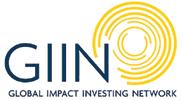




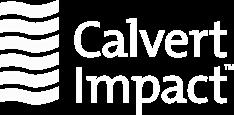
7550 Wisconsin Avenue
8th Floor
Bethesda, MD 20814
info@calvertimpact.org 800.248.0337
calvertimpact.org
linkedin.com/company/calvert-impact
NO INVESTMENT ADVICE This guide is for informational purposes only and you should not construe any such information or other material as legal, tax, investment, financial, or other advice. This guide does not constitute a comprehensive or complete statement of the matters discussed or the law relating thereto, nor does it address the circumstances of any particular individual or entity. Nothing contained in this guide constitutes a solicitation, recommendation, endorsement, or offer by Calvert Impact or any thirdparty to invest in or buy or sell any securities or other financial instruments issued by Calvert Impact or any third-party. Any such offer or solicitation would only be made by formal offering documents. Calvert Impact is not a fiduciary by virtue of any person’s use of this guide. Although the information provided herein has been obtained from sources that Calvert Impact believes to be reliable, we do not guarantee its accuracy, and such information may be incomplete, condensed, or outdated. The information is subject to change without notice, and Calvert Impact has no obligation to update you. You alone assume the sole responsibility of evaluating the merits and risks associated with the use of any information in this guide before making any decisions based on such information.
INVESTMENT RISKS There are risks associated with investing in securities or any other financial instrument, including risk of loss. Some high-risk investments may use leverage, which will accentuate gains & losses. Foreign investing involves special risks, including a greater volatility and political, economic and currency risks and differences in accounting methods. A security’s or a firm’s past investment performance is not a guarantee or predictor of future investment performance.